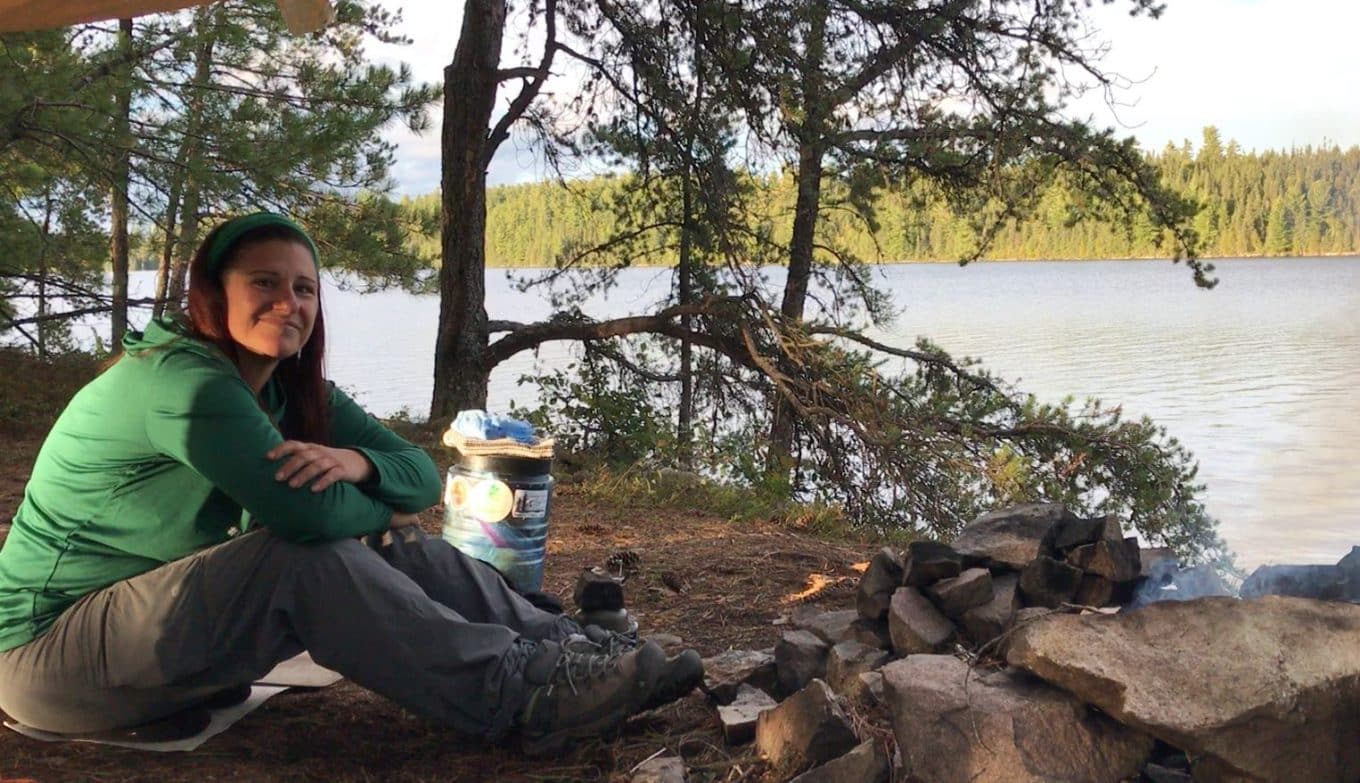Backpacking Skills: How to Start a Fire Without a Lighter or Matches
Knowing how to start a fire is one of the integral parts of not only backcountry survival but also enjoyment. There’s nothing like ending a long day on the trail chilling by a crackling campfire, warming your chilled toes.
It’s not always necessary, of course. Fuel stoves mean you can forgo building a fire at all if you want to. But doing without a fire should be a choice, not something you do because you lack the necessary skills!
Let’s talk about why being able to start a fire is important. Then, we’ll dive into ways to lay a fire and troubleshoot some worst-case scenarios.
Why Fire is Important
Here’s a short list of all the reasons why you should always have a way to start a fire when hiking in the backcountry, even if you generally choose not to.
- Boiling water for rehydrating food, drinking, and wound care
- Melting snow for drinking
- Warmth
- Keeping wildlife at bay
- Cooking foraged or trapped food sources
- Speeding up the drying process for wet gear
If temperatures dip lower than planned, you get wet, or are stranded and run out of fuel, being able to start a fire can save your life.

The Basics of Starting a Campfire
Let’s talk about the nuts and bolts of starting a fire. You’ll need…
- Dry starter material
- Heat or spark creator
- Incrementally sized fuel
We’ll break those down and look at options in a minute.
The first thing you’re going to do is gather your materials. Getting a flame going and then realizing that you don’t have more fuel handy is the pits. Don’t start trying to light anything until you have a decent variety of sticks.
When you do, you can build your fire. Choose a spot with a durable surface, far enough away from any underbrush to avoid accidental wildfires. Your location may have regulations on this, so check any park, state, or county rules and keep your fire where it needs to be!
Fire Lay Options
Option 1. Teepee
This lay starts with the dry starter material. Arrange small, dry sticks in a circle with their ends leaning on each other next, forming a teepee. When the starter is lit, the flames will lick against the sticks and light them as well. Larger sticks are added gradually, following the same teepee pattern. This lay starts small but can be grown as large as the amount of fuel allows.
Option 2. Upside Down
For an upside-down lay, start with larger pieces. Do a few layers, placing them in a crosshatch design. Follow the same pattern with smaller sticks before finally ending with your starter fuel. When lit, the flame creeps down through the layers of fuel. This lay can lend itself to long-lasting fires but can be tricky to start in windy conditions.
Option 3. Star
The star lay conjures up story-book imagery, with its perfectly placed logs in a symmetrical design. You’ll put your starter in the middle so that when it lights, the end of the larger logs will catch the flame. This method requires consistent attention but can keep a consistent flame if tended well.
Option 4. Log cabin
If you liked playing with Lincoln Logs as a kid, you’ll love this fire lay. Use some substantial pieces of fuel to build 4 walls, leaving a space in the middle. Fill that space with your starter material. When it’s lit, the larger fuel pieces will catch, and you’ll have a hefty fire right out of the gate.
This isn’t an exhaustive list of fire lays; combining elements from a couple can make great fires, too. One of my personal favorites is to build a teepee on top of a good base of larger fuel logs, similar to an upside-down lay. The important thing for any of them is to have all three elements ready to go, so let’s look at those a little closer.

Fire Starters from Nature
If you’re planning on having a fire and choose to carry starter material, you’ll be all set. Little bundles of paraffin-coated pine shavings or fire starter sticks are easy to come by online or at local outdoor stores.
But if you’re not into packing that extra weight or don’t have room in your BearVault to store the curiously smelly bundles, there are good options in almost any ecosystem.
Pine Trees
The sap of pine trees contains resin, which is extremely flammable. That’s what makes these trees go up so quickly in a forest fire! You can harness that power to start your campfire. Get the stickiest pieces of bark you can find and use a pocket knife to scrape excess onto other materials like a bundle of dried needles.
Birch Bark
Birch trees contain an element called betulin that makes the bark water-resistant and excellent at burning slowly and steadily. It peels off the tree in sheets, making it easy to harvest what you need. Roll it up, and you’ll get a firestarter with plenty of staying power to get a flame going.
Cattails
Found around the edges of ponds and lakes across the entire North American continent, the fuzz of a cattail plant is known as a flash starter. It lights fast and burns fast, so having more substantial fuel ready to catch is important. You can also pair it with a longer-lasting starter, like sap-covered pine cones.
Dry Leaves
Finding dry leaves in a forest usually isn’t hard, even if it’s a damp morning. Find a thick stand of trees where piles of leaves will be deepest. If the top layer is too wet, you can dig down and find better options below. These starters burn quickly, so have plenty on hand to sustain a flame.
Basically, anything that’s dry and thin is your friend. Some materials, like ferns or spruce needles, burn brighter and faster than others. This can be useful to get slower-catching but longer-burning materials, like pine cones or birch bark, to get started. Variety helps!
How to Start a Fire With Flint & Steel
Flint and steel are classic tools to master. Striking the flint, often cylindrical in shape, with a piece of steel creates sparks that fall on your starting material. It takes practice to get a good spray of sparks and direct them where they need to go, so be sure and practice before depending on this method.
There are also springloaded options that allow for single-handed use.
How to Start a Fire With Sticks
Perhaps the hardest method for starting a fire, rubbing sticks together is the ultimate skill in survival scenarios. If you have 2 pieces of wood and some tinder, you can have a fire. This process uses friction to create heat and break down the fibers of the wood, turning it into smoldering sawdust. When a small pile has accumulated, carefully transferring it into a bundle of starting material lets the energy transfer to the starter, which will eventually combust. It requires careful and attentive nurturing to start a fire with nothing but sticks and starter, but it can be done!

When All Else Fails
If you’re in a survival situation and can’t make a flame, it’s time to shift gears.
For warmth, your goal is to trap body heat and stay dry. That means shelter is your top priority. If you’re out longer than planned in weather that’s turned cold, you need to take steps to prevent dangerous circumstances.
Get out of the wind.
Even a slight breeze can take “cold” and make it “frigid”. It cuts through layers, making your body temperature drop that much faster. Find a hollow, creek bank, or overhang to block any wind you can.
Insulate your body.
If you’re out and about without shelter, use whatever you can find to put an extra layer around you. Leaves, pine needles, dirt, and even snow can help you create a way to trap body heat. Bedding down in a pile of leaves can be a great way to ward off the chill. Stuffing some into your baggy coat can be useful, too.
Stay awake.
It may be hard, but don’t let yourself fall asleep if it’s dangerously cold. Clench and unclench your muscles to generate warmth and keep your eyes open. Use positive self-talk to keep your spirits up.
Just Carry a Lighter
Accidental hypothermia accounts for nearly 50 out of 1 million emergency medical calls in US national parks. That may not seem like many… but you sure wouldn’t want to add one more to it!
With so many options, there’s no need to enter the backcountry without dependable fire-starting tools. Basic fuel lighters, battery-powered arc lighters, waterproof matches… Just toss them in your pack, and you’re good to go.
Still, it’s never a bad idea to think through worst-case scenarios. Now that you’ve read this article, you’ll have some ideas to get you through if you wind up stranded without any tools.
Author Profile

Jessica Cockroft
Jess merges her passion for words and an insatiable longing for adventure as an outdoor freelance content writer and marketer. When she’s not busy stringing words together you’ll probably find her planning another camping trip for her crew of kids or taking care of the homestead. You can find her on LinkedIn and Instagram, as well as on her own website.




